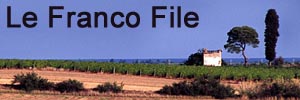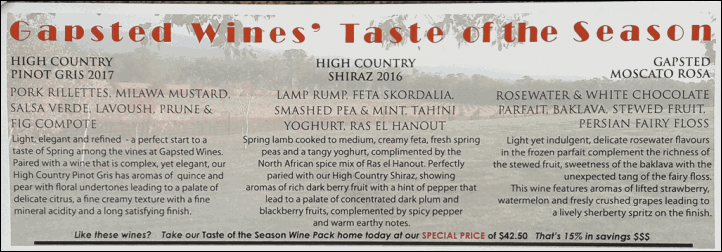We had spent our first and very comfortable night in David and Kay’s guest room in their mud-brick self built mansion. There had been a briefly uncomfortable feeling as Buddy, their dog, had peered longingly at us through our French doors – he lives outside on the veranda – but we got over that and fell asleep.
We awoke to rain which drifted across the property while we breakfasted. The rain did eventually desist and we embarked upon an excursion that David and Kay were keen to take us on. We were heading to Tarra-Bulga National Park, in the Strzeleki Hills [pronounced Strez-leki] for a fern walk. The ferns in question were tree ferns which were on Francine’s hit list for New Zealand. However, if all went to plan today, she’d be seeing them ahead of time. [Speaking of ahead of time, I’ve already seen a couple of dragonflies that were on my NZ hit list.]
I say “we were heading for” but David’s idea of heading for is more like steering an oscillating course which might, if you are lucky, average to the correct direction. We were soon off the tarmac on on gravel forest roads. I’d call them tracks but in Oz they seem to be considered to be roads. David’s recently acquired Land Rover Discovery 4 felt in its element. David had two satnavs, one in the car and one on his smartphone. Both remained studiously turned off. Eventually he accosted a local and asked how far his target road was. Go figure.
 We did eventually arrive at the car park and rumbling tummies demanded lunch. We were surrounded by a small gang of Crimson Rosellas which also expressed an interest in our lunch. Shy they were not. I’m sure to locals they are as irritating as seagulls can be in the UK but feeding a parrot is something memorable to us.
We did eventually arrive at the car park and rumbling tummies demanded lunch. We were surrounded by a small gang of Crimson Rosellas which also expressed an interest in our lunch. Shy they were not. I’m sure to locals they are as irritating as seagulls can be in the UK but feeding a parrot is something memorable to us.

 The walk through the trees took us down into a gulley which we crossed via a pedestrian suspension bridge. Tree Ferns were all around. Francine was in her element. Giant gum trees towered above us, too, and we even caught a fleeting glimpse of a Lyre Bird as it rummaged in the forest litter. It was not about to pose for a tourist photo but at least we’d now seen one.
The walk through the trees took us down into a gulley which we crossed via a pedestrian suspension bridge. Tree Ferns were all around. Francine was in her element. Giant gum trees towered above us, too, and we even caught a fleeting glimpse of a Lyre Bird as it rummaged in the forest litter. It was not about to pose for a tourist photo but at least we’d now seen one.
 Many will know of my legendary love of children. [Ahem] Along with dogs, children are one of the things I tend to avoid given the choice. I wasn’t. Not only do David and Kay have a dog – he’s mostly quiet and therefore OK – but they were also baby-sitting their grandson Jaxon for two days. Jaxon was, of course, with us, too. Here is a very rare photograph.
Many will know of my legendary love of children. [Ahem] Along with dogs, children are one of the things I tend to avoid given the choice. I wasn’t. Not only do David and Kay have a dog – he’s mostly quiet and therefore OK – but they were also baby-sitting their grandson Jaxon for two days. Jaxon was, of course, with us, too. Here is a very rare photograph.
.











































Recent Comments